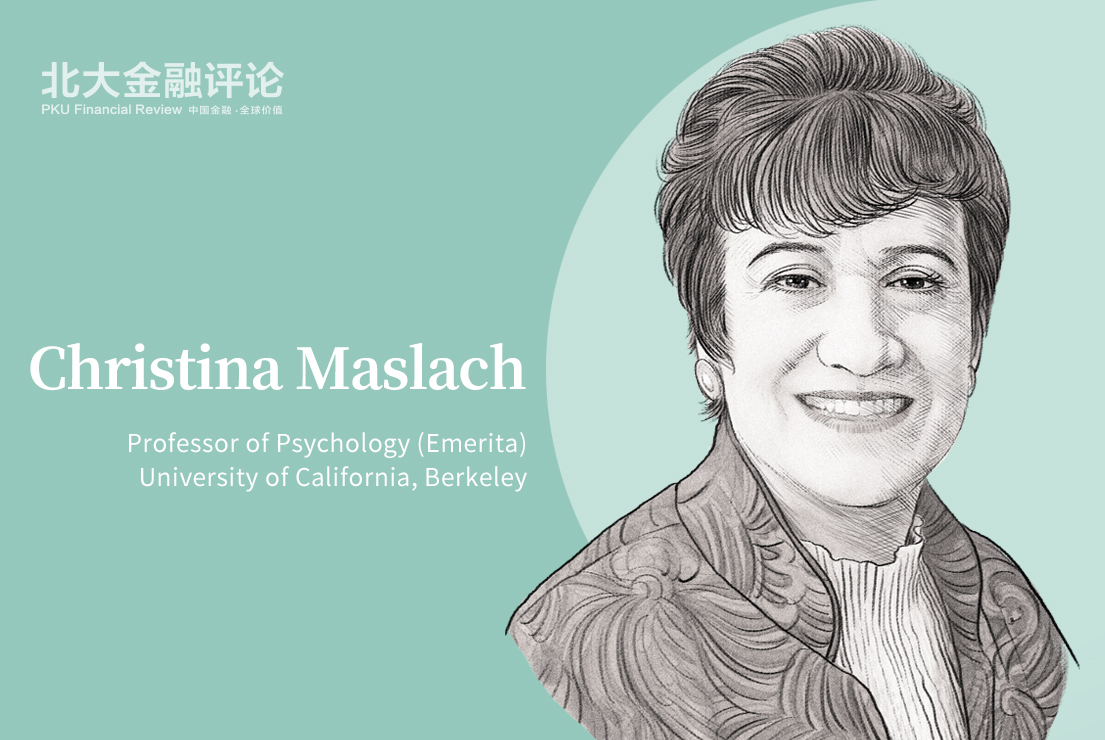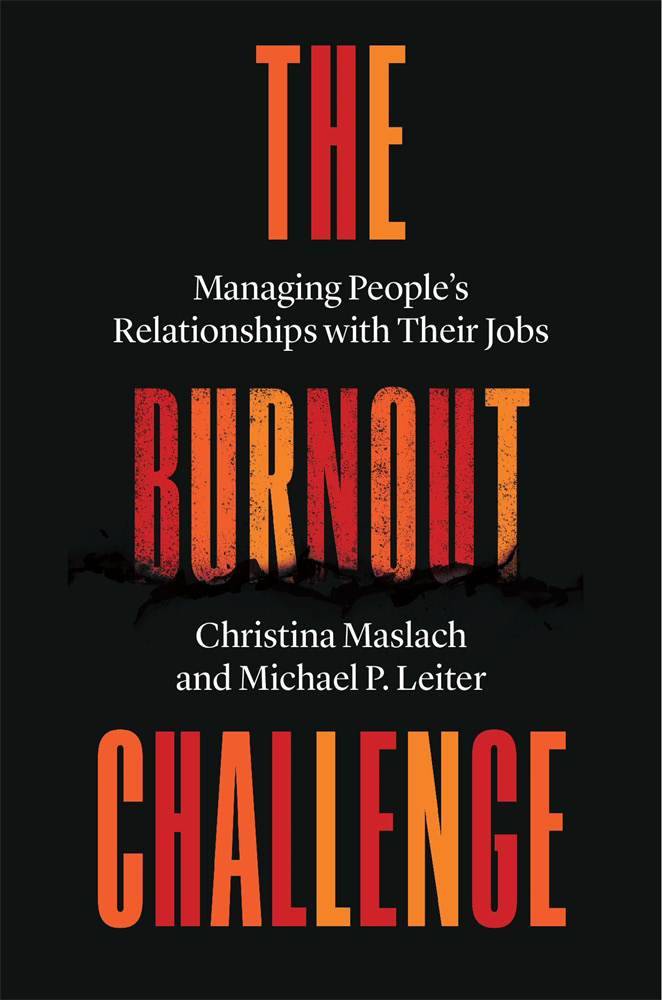Selective behaviors happen all the time, and "burnout" or "active" cannot be simply defined. In the interview with
PKU Financial Review, Professor of Psychology (Emerita) at the University of California, Berkeley, Christina Maslach states that, burnout is not and should not be diagnosed as depression, it comes from the management to chronic stress.
PKU Financial Review: We have read your book "The Burnout Challenge: Managing People's Relationships with Their Jobs" carefully. Burnout is mainly a disconnect between organizations and individuals, especially in six areas: workload, control, rewards, community, fairness, and values. But who in an organization wants to fix this disconnect? The CEO? The biggest constraint he faces is not the burnout within the company but the competitiveness and profit of the company.
Maslach & Leiter: The term, “disconnect,” is not the way we characterize what is going on with employees in their organization. Rather, we talk about the connected relationship between the job and the employee, and what happens when that relationship involves a mismatch, or bad fit. These mismatches represent the kind of chronic job stressors that are the cause of the burnout experience, and the solution is to find ways to improve the matches, so that employees can thrive under those better conditions and do their work well.
We believe that all levels of management, from the CEO to first-line managers, should be concerned about fixing the mismatches, because burnout is actually very costly for the organization. Why? Because burnout leads to increased absenteeism, lower productivity, more turnover, and higher healthcare costs. For example, an article in the Harvard Business Review estimated that, in the United States, annual healthcare spending linked to burnout ranges from $125 billion to $190 billion [Garton, 2017]. Other studies have shown that employees experiencing burnout not only are more likely to take time off from work, but they do so for more than twice as long as other employees [Center for Disease Control, 2015]. And higher turnover is costly because hiring new workers involves higher replacement costs [Pavilion, 2022]. A noteworthy summary of how these kinds of chronic job-person mismatches have a negative effect on both economic and human bottom lines is the book, “Dying for a Paycheck: How Modern Management Harms Employee Health and Company Performance,” by Jeffrey Pfeffer of the Stanford Business School [Pfeffer, J. (2018].
PKU Financial Review: There is a phenomenon of "quiet quitting" in the United States, then China also has expressions of occupational burnout similar to "lying flat" and "Buddhism-Let it go". But why do we feel burnout in almost every profession or age group?
Maslach & Leiter: Burnout is a fundamental existential crisis that employees experience when working in a chronically stressful job environment that is mismatched to their needs and aspirations. This experience is fairly consistent across different occupations, even if those differ in the specific mismatches that aggravate burnout (for example, mismatches in control may be more important for physicians and nurses in healthcare, or for tech workers, than for people working in sales jobs).
PKU Financial Review: What is your opinion on the burnout of China’s “996” job culture?
Maslach & Leiter: The chronic job characteristics that inspire quiet quitting are those that fail to show respect for employees by burdening them with unrealistic and unhealthy working conditions that cut into their “non-work” life (personal and sleep time). For example, as we mention in our book, the 996 job culture among tech workers in China (working from 9am to 9pm, six days per week) is so unhealthy and unfair for employees that they “lie flat” in order to get some needed rest and to carve out some time for personal interests and obligations. The mismatches that are probably most important here are work overload, lack of control, and absence of fairness.
Our research on burnout has identified several types of work experiences for employees -- one of which is burnout, and another is its opposite of engagement. Another type is disengagement -- in which the employee develops the high cynicism of burnout (but not necessarily the exhaustion or ineffectiveness). This cynicism about the job conditions in the company often leads to a shift in job performance, in which the employee is only trying to do the bare minimum rather than his or her very best. It is not exactly the same as “quiet quitting” or “lying flat,” but it is related in terms of its response to chronic job stressors that have not been well managed.
PKU Financial Review: A lot of cases in China where burnout develops into depression, although physiologists tell us that burnout's cortisol profile of burnout is different from melancholic depression. However, it is true that many people are very depressed because they are unable to do their jobs. Many Chinese companies have to use the Maslach Burnout Inventory (MBI) created by you to quantify the burnout of employees, and even set up psychological consultants. Do you think this is a good way?
Maslach & Leiter: This question seems to be based on several implicit assumptions about burnout, which are actually not true. Therefore, we want to begin by clarifying these basic points. First, based on its review of the burnout research over the past four decades, the World Health Organization (WHO) defines job burnout as an “occupational phenomenon” that can eventually lead to physical and/or mental health issues, but that is not itself a medical condition. Therefore, it is not the same thing as depression, and it should not be “diagnosed” as some sort of mental illness that requires treatment by trained therapists.
Second, WHO defines job burnout as a stress response to chronic job stressors that have not been successfully managed. This response includes three components: the exhaustion of high stress, but also cynicism about the job, and a sense of professional ineffectiveness. The stress response is a normal part of human functioning, when the person is faced with threats or challenges, and should not be considered a pathology. However, it is harder for people to recover from chronic job stressors, which are high frequency and ongoing -- in other words, stressors that are present in the workplace most of the time. And when employees become chronically stressed and experience burnout, then the effects include poor job performance, absenteeism, and turnover, in addition to employee health problems. For the organization, this means the potential loss of good employees (a poor return on the investment in hiring them), the high costs of replacement for turnover, and difficulty in attracting new employees.
Attempts to deal with these effects, by helping employees to cope with the stressors -- such as providing psychological counseling -- may be well intentioned, but they do not actually deal with why burnout is occurring in the first place. The causes of burnout are the chronic job stressors that have not been well managed, so preventing burnout is actually a management issue, and not simply one of employees’ personal difficulties in keeping up with the demanding pace of work.
The use of the MBI to identify “who” is experiencing burnout is actually a misuse of this research measure. Instead, the MBI was designed to discover “why” people are experiencing burnout by combining it with other measures of job conditions. If the MBI is used in this way, with the overall results being shared with employees, then it becomes possible to address questions about what are the chronic job stressors and how they could be better managed. (Maslach & Leiter, 2021). The ultimate goal is to improve the match between employees and their jobs, so that they can work well and thrive, rather than getting beaten down.
That goal is the main focus of our recent book,
The Burnout Challenge: Managing People’s Relationships with Their Jobs, in which we describe the major areas of job-person match or mismatch, and discuss how the matches can be improved on an ongoing basis. This involves better management of chronic job stressors, and thus improving the work environment, which we believe is a more constructive approach than trying to treat the effects of burnout (such as employee physical and mental health problems) after it has occurred.
(Note: We not only interviewed Professor Maslach, but also her coauthor Michael P. Leiter, Adjunct Professor of Psychology Acadia University. Therefore, we use ”Maslach & Leiter” as a whole.)
* This article has been initially published in PKU Financial Review.















